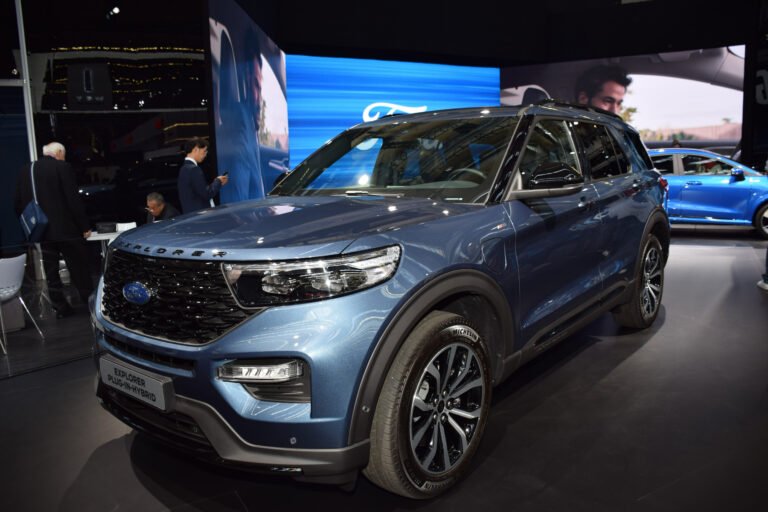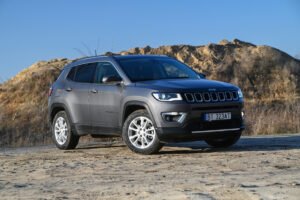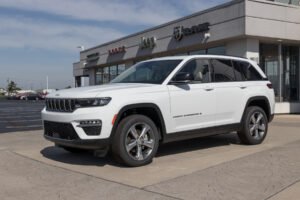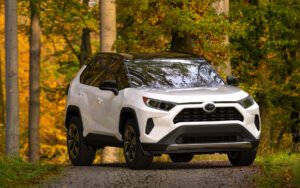The midsize SUV segment in the United States witnesses excellent demand and also captivates car buyers like few others.
Among the many options in this segment, the Ford Explorer has been one of the most successful. Priced between $37,650 to $55,770, this SUV has been playing the market to its advantage.
Today, we will provide you some top alternatives to the highly-regarded & liked Ford Explorer that you must definitely check out before signing on any dotted line.
1. Kia Telluride ($33,390 – $43,290)
Similarities Between the Kia Telluride and the Ford Explorer
Both Telluride and Explorer are available in two-wheel drive & all-wheel drive versions. Besides, automatic transmissions and variable driving modes are common as well.
Like Ford’s SUV, the Telluride can also be had with a V6 powerplant, and both cars have similar fuel economies in the city.
Both cars’ interiors come with three rows of seating, plenty of space for cargo, and comfy front chairs. One can create even more space inside by folding down the second and third rows of seats.
The Kia Telluride and Ford Explorer also share similar safety features such as collision detection with autonomous emergency braking, blind-spot monitoring, and active lane-keeping assist.
What Makes the Kia Telluride Stand Out?
While the Telluride is only assembled in the United States, Ford also has an assembly plant for the Explorer in China as well. Then there’s the fact that the Telluride is a newer car, as the Ford Explorer first arrived in the 1990s.
The Kia Telluride’s boxy and upright stance lends it a ‘butch SUV’ look that many buyers love. It is also nearly 2 inches shorter in length and weighs about 200 pounds less than the Explorer.
The Telluride’s cabin quality and overall fit-and-finish are far superior to Ford’s, offering a more pleasant experience. It also gets a dual-pane sunroof, is roomier across all three rows, and its second row is much easier to operate.
Here are some more of the Kia Telluride’s strong suits:
- It’s cheaper than the Explorer.
- Seats up to 8 people.
- Gets adaptive cruise control as standard.
- Boasts a larger 10.25-inch infotainment touchscreen.
- Better ride quality.
The Kia Telluride offers brilliant value-for-money, delectable styling & quality, plus great comfort overall. Here’s the specification table for better insight:
| Price | $33,390 – $43,290 |
| Fuel Efficiency | 20 MPG (City) / 26 MPG (Highway) |
| Engine | 3.8-Liter Naturally-Aspirated Regular Unleaded V6 |
| Horsepower | 291 hp |
| Torque | 262 lb-ft |
| Acceleration | 0 – 60 mph in 7.2 seconds |
| Top Speed | 132 mph |
| Body Style | Sport Utility Vehicle |
| Passenger Capacity | 7 – 8 |
| Drivetrain | Front-Wheel Drive/All-Wheel Drive |
| Transmission | 8-Speed Automatic |
2. Hyundai Palisade ($34,950 – $48,900)
Similarities Between the Palisade and the Ford Explorer
Like the Ford Explorer, the Hyundai Palisade also features two-wheel drive and all-wheel drive configurations. Both cars also get a standard torque-converter automatic transmission as well as a six-cylinder gas engine.
The two also share similar cargo capacities that you can extend further with the split-folding rear seats. The front seats of both SUVs are also well-bolstered and comfortable. Meanwhile, both cabins maintain good NVH levels.
As for the safety aspects, the Palisade also features blind-spot warning, lane-departure warning with lane-keeping assist, and forward-collision warning with automatic emergency braking. Both cars also get Apple CarPlay & Android Auto.
Where Does the Hyundai Palisade Trump the Ford Explorer?
The Hyundai Palisade is much newer, slightly shorter in length, and its exterior styling is bolder and more eye-catching than the Explorer. Furthermore, the Palisade is lighter than the Ford by around 180 pounds.
There’s no denying the better quality of materials and build on the inside of the Palisade. Its cabin also feels larger, with the capacity of carrying up to 8 occupants.
Moreover, the powertrain of the Hyundai Palisade feels more linear. And most people will find its infotainment system easier to use on a daily basis.
The following are other stand-out features of Hyundai Palisade:
- Easier to get into the third row.
- Cheaper than the Explorer.
- Smoother ride.
- More standard equipment.
The Hyundai Palisade is for those who prefer a better and posher interior, extensive standard features, and a smooth yet reliable powertrain. That said, check out the specifications table below for more details:
| Price | $34,950 – $48,900 |
| Fuel Efficiency | 19 MPG (City) / 27 MPG (Highway) |
| Engine | 3.8-Liter Naturally-Aspirated Regular Unleaded V6 |
| Horsepower | 291 hp |
| Torque | 262 lb-ft |
| Acceleration | 0 – 60 mph in 7.2 seconds |
| Top Speed | 132 mph |
| Body Style | Sport Utility Vehicle |
| Passenger Capacity | 7 – 8 |
| Drivetrain | Front-Wheel Drive/All-Wheel Drive |
| Transmission | 8-Speed Automatic |
3. Toyota Highlander ($35,855 – $49,510)
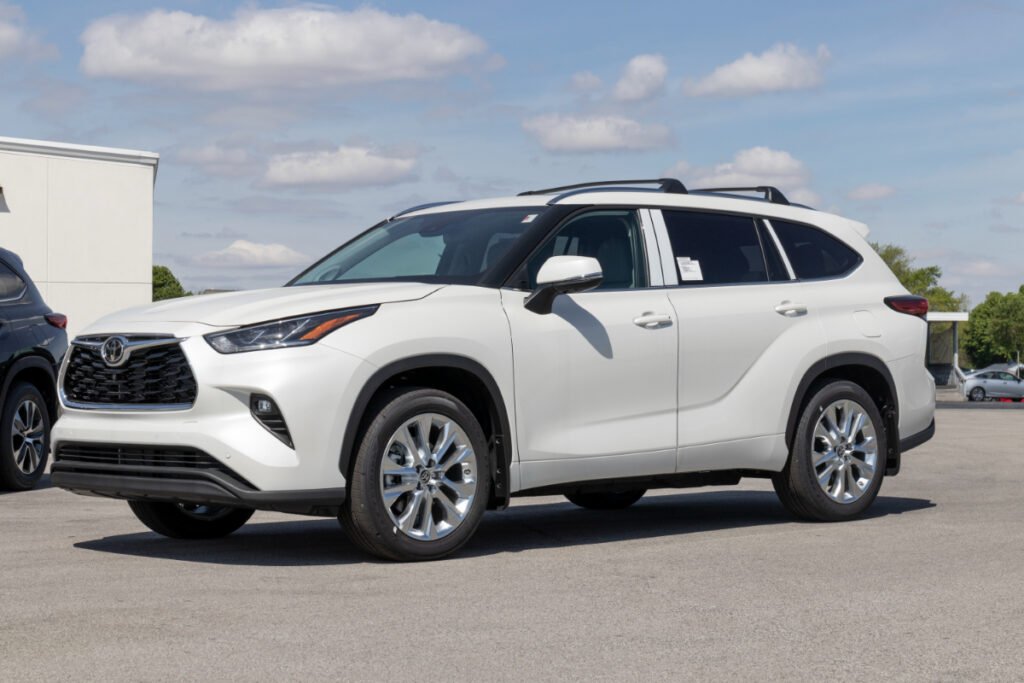
Similarities Between the Toyota Highlander and the Ford Explorer
Both Highlander and Explorer offer automatic transmissions, two-wheel drive, and all-wheel drive formats. They also share equally-frugal base engines and urban fuel consumption figures. The two also share an almost-identical ground clearance of about 8 inches.
On the inside, both the Highlander and Explorer’s base trim gets fabric upholstery, comparable cargo space behind the second row, split-folding rear seats, and Android Auto & Apple CarPlay.
The two SUVs also share other standard features like 18-inch alloy wheels, lane-departure warning with lane-keeping assist, automatic high beams, and a post-crash SOS system.
Here’s How the Toyota Highlander Betters the Ford Explorer
The Toyota Highlander’s exterior design is sharper, sleeker, and more contemporary than the Explorer’s. It is also lighter by 200 pounds, while its stance looks more dynamic.
The Highlander’s cabin can seat up to 8 people, and the overall quality of materials and their fit & finish feels superior to the Explorer.
The Toyota Highlander also gets more equipment as standard than the Ford Explorer, while the general reliability factor of the former is second to none.
Here are some other notable positives of the Toyota Highlander:
- More frugal on the highway.
- Gets radar-guided cruise control as standard.
- Better legroom for second-row passengers.
- Toyota Safety Sense 2.5+ safety suite is comprehensive.
- Powertrain feels more refined.
If you’re searching for a chic-looking urban SUV with proven brand reliability and up-to-date technical & convenience features, the Toyota Highlander is a good bet. Let’s run through the below specifications table for more insight:
| Price | $35,855 – $49,510 |
| Fuel Efficiency | 21 MPG (City) / 29 MPG (Highway) |
| Engine | 3.5-Liter Naturally-Aspirated Regular Unleaded V6 |
| Horsepower | 295 hp |
| Torque | 263 lb-ft |
| Acceleration | 0 – 60 mph in 7.3 seconds |
| Top Speed | 118 mph |
| Body Style | Sport Utility Vehicle |
| Passenger Capacity | 7 – 8 |
| Drivetrain | Front-Wheel Drive/All-Wheel Drive |
| Transmission | 8-Speed Automatic |
4. Chevrolet Traverse ($35,915 – $55,595)
Similarities Between the Chevrolet Traverse and the Explorer
Both Chevrolet Traverse and Ford Explorer share similar torque-converter automatic gearboxes and optional two-wheel drive and all-wheel drive. Regarding their base variants, both SUVs have around 300 horsepower and measure approximately 79 inches.
Like Explorer, the Traverse also comes with three rows of seats, acres of interior space, and multiway split-folding back seats.
It also shares a similar amount of second-row legroom & headroom, and front shoulder room. They also have similar levels of build quality, while handling characteristics are at par.
The two cars also get identical features such as blind-spot warning, automatic high beams, collision detection with autonomous emergency braking, three-zone automatic climate control, and a post-crash SOS alert system.
What Makes the Traverse Better than the Explorer
One of the first things you will notice about the Chevrolet Traverse is that it is bigger. It’s longer, taller, and boasts a longer wheelbase as well.
The larger frame equates to a more intimidating road presence and the body itself features more muscular contours.
Besides, the Traverse’s interior hosts space for up to 8 occupants, cargo volume of up to 98.2 cubic feet, plus better shoulder room & legroom for third-row passengers.
When it comes to the Traverse’s seats, the ones in the middle feel better overall compared to the Ford’s. For those who prefer a simpler dashboard and old-school switchgear layout, the cabin of the Chevy will seem more communicative.
For more noteworthy features of the Traverse, check out the pointers below:
- The Traverse has a higher payload capacity.
- Starting price is lower.
- Comforting ride.
- Traverse has more usable cubby spaces.
- There’s wireless Apple CarPlay & Android Auto.
The Chevrolet Traverse is great for buyers who want a more chiseled exterior and handy onboard features. The specifications table below will give you a better insight:
| Price | $35,915 – $55,595 |
| Fuel Efficiency | 18 MPG (City) / 27 MPG (Highway) |
| Engine | 3.6-Liter Naturally-Aspirated Regular Unleaded V6 |
| Horsepower | 310 hp |
| Torque | 266 lb-ft |
| Acceleration | 0 – 60 mph in 6.6 seconds |
| Top Speed | 130 mph |
| Body Style | Sport Utility Vehicle |
| Passenger Capacity | 7 – 8 |
| Drivetrain | Front-Wheel Drive/All-Wheel Drive |
| Transmission | 9-Speed Automatic |
5. Honda Pilot ($38,080 – $51,870)
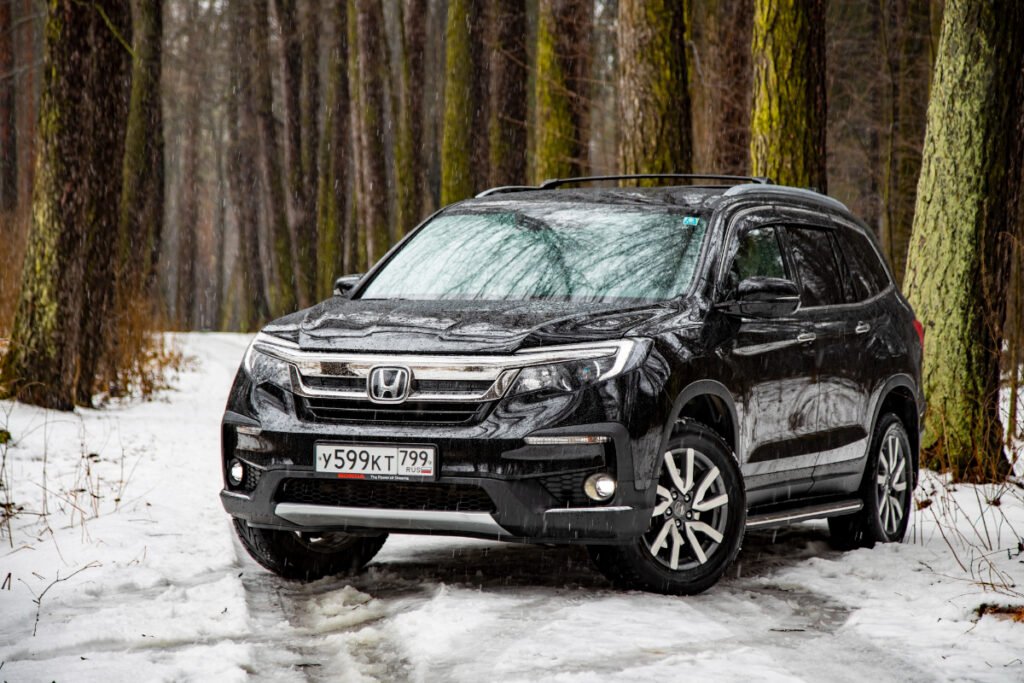
Similarities Between the Honda Pilot and the Ford Explorer
Like Ford’s SUV, the Pilot is also a midsize SUV primarily assembled in the United States. It’s almost as wide as the Explorer, with higher variants weighing pretty much the same.
Moreover, both cars get automatic gearboxes, plus two-wheel drive and all-wheel drive configurations. They also share similar three rows of seats with identical third-row headroom, legroom, and shoulder room.
The Pilot’s passenger volume and cargo capacity are also similar to the Explorer’s, while cabin NVH is almost identical too.
The two SUVs also share similar features like split-folding rear seats, tri-zone climate control, automatic high beams, forward collision warning with auto-emergency braking, lane-departure warning with lane-keeping assist, and TPMS.
How Does the Honda Pilot Take the Lead over Explorer?
For starters, the Honda Pilot’s exterior design is more sedate than the Ford Explorer. Its cabin feels more practically & ergonomically sound, with a better build quality.
Since the Pilot is more affordable than the Ford Explorer at the high-end, it represents better value. Also, Honda’s reliability factor has always been one to be respected. Its onboard features & functions are easier to use as well.
Unlike the Explorer, the Pilot’s powertrain is smoother and feels nearly bulletproof. Since it’s slightly smaller, maneuvering the Honda within the city is less of a chore.
Here are some more niceties of the Honda Pilot:
- Seats up to 8 occupants.
- Adaptive cruise control is standard.
- Even the base variant gets heated seats.
- Boasts a larger fuel tank.
- Seamless infotainment system.
The Honda Pilot appeases a wide spectrum of buyers. It offers a simplistic yet functional approach to modern motoring and an excellently-calm driving experience.
| Price | $38,080 – $51,870 |
| Fuel Efficiency | 20 MPG (City) / 27 MPG (Highway) |
| Engine | 3.5-Liter Naturally-Aspirated Regular Unleaded V6 |
| Horsepower | 280 hp |
| Torque | 262 lb-ft |
| Acceleration | 0 – 60 mph in 6.3 seconds |
| Top Speed | 130 mph |
| Body Style | Sport Utility Vehicle |
| Passenger Capacity | 7 – 8 |
| Drivetrain | Front-Wheel Drive/All-Wheel Drive |
| Transmission | 9-Speed Automatic |
If you’re looking for alternatives to the Ford Explorer, the above cars will serve you well. Where the Honda Pilot and Toyota Highlander offer great value and recall factor, the Korean siblings shine with their newer and better road presence. Finally, the Chevrolet Traverse is for those who want an established and versatile American icon.
So, go ahead and take these ones for a spin before deciding on your right car. We also have your back if you’re looking for alternatives to the Ford Expedition.

